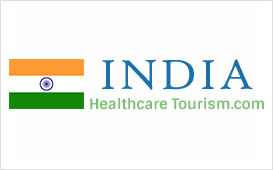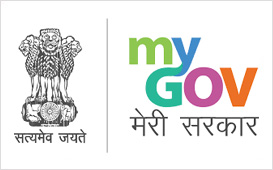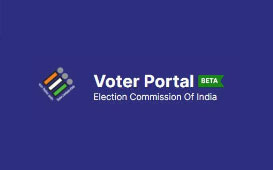It is no mean task to be a pharmacy to the world. And yet, the estimated $ 20 billion (Rs 1.2 lakh crore) Indian pharmaceutical industry carries that responsibility without much ado - putting India on the global map as a destination for medicines, at an affordable price.
For Governments across the world, battling to get a grip on rising healthcare costs – Indian drug-makers offer cost-effective generic drugs or chemically similar medicines that are not covered by patent protection. And they offer generics, even as these companies climb the research ladder to innovate and bring out medicines with improved delivery-mechanisms, for example, making it more convenient for a consumer to take the said medicine.
The story that in a sense catapulted Indian medicines onto the world arena, was when prices were slashed on HIV/AIDS drugs offered to patients in Africa, in 2001. The triple-drug-therapy was made available to patients in Africa at the historic price of, less than a dollar a day. And the dramatic story became the theme of the film - “Fire in the blood”, recently shown across the world. A key player in the film is Indian drug-maker Cipla, responsible for that dramatic price on the AIDS cocktail of $ 350 per patient per year, in Africa – at a time when other foreign companies offered the therapy at between $ 10,000 and 15,000.
In fact, other Indian players too - like the then Delhi-based Ranbaxy (before it was bought out by Japanese drug-maker Daiichi Sankyo in 2008) and Hyderabad-based Dr Reddy’s Laboratories, were raising the profile of Indian drug companies in the global healthcare space. Armed with less-expensive medicine, aggressive science and a can-do spirit – they explored new shores where Indian drugs companies had not gone before. And the more they were seen globally, the more confidence foreign companies got to partner with them.
Today, close to half the Indian pharmaceutical industry’s revenues come from exports, at about $ 8 billion, with domestic drug-makers exporting to over 200 countries. In fact, the Pharmaceuticals Export Promotion Council of India (Pharmexcil) says that total exports have clocked a healthy 16 percent growth over the last 5 years. Over 55 percent of the country’s exports are to the regulated markets, says the export authority, of which a lions share goes to the United States of America, followed by the United Kingdom.
Changing landscape
But the landscape has been changing, and dramatically, both globally and in India. And the economic slow-down has forced several global players to appreciate the frugal science and reduced pricing that generic players bring to the table. As a result, opportunities grew for contract manufacturing and research collaborations between foreign players and Indian drug companies - especially since the latter has both the skills and the costs to serve up the best option.
Over the years, the domestic market-place is seeing foreign players making a bee-line for a local base in India, through their own companies, or acquisitions. And parallely, others are collaborating with Indian drug-majors – a tie-up between Sun Pharma and Merck on diabetes drugs being just a case in point.
The domestic landscape too has changed, with Ranbaxy and other local drug companies selling bits or their entire business to foreign players. But the batting line-up has seen the emergence of newer promising players as well- including a Sun Pharma or Lupin, for example.
Rules & Statistics
The domestic regulatory landscape has also seen a sea-change with India amending its Patents Act in 2005 to protect product patents. Though the regime has seen contentious battles fought in the country’s courts, the end result has been that greater clarity has been brought into the implementation of the law.
Quality too has been another key feature, with domestic drug companies striving to keep pace with constantly evolving laws locally and globally. In fact, India has over 550 manufacturing sites registered with the US Food and Drug Administration, of which 323 are USFDA approved, as on March 2013, says the Indian Commerce Ministry, citing Pharmexcil data. And there are 350 manufacturing sites endorsed by the European Union for their Good Manufacturing Practices in India, as on April 2013, it added.
Manufacturing costs work out about 40 percent less than US costs, says the authority, thanks to low installation costs, among other things.
Skill-sets to match
The statistics do indeed tell a story of drug-makers with skill sets spanning from making anti-retroviral or malaria drugs, to cancer drugs, diabetes medicines, and of course vaccines.
The Pharmexcil says that India is the largest global exporter of generic medicines (in volumes), it exports vaccines to 150 countries and produces 40 to 70 percent of the World Health Organisation demand for DPT and BCG and 90 percent of measles vaccines.
Complicated bio-similar drugs, made from biological sources as opposed to chemical ones, are also segments that domestic drug-makers are not shying away from. So there are several Indian drug companies making vaccines, insulin, and other biologicals – just take a look at Serum Institute, Biocon, Wockhardt or Dr Reddy’s for instance. And as is the case overseas, in India too biologics remains an evolving area, in regulatory terms.
Across the country, there are the traditional and newer hubs of manufacturing and research work. For instance, there are interesting hubs of pharmaceutical and biological work done in Bangalore and Hyderabad, even as the big boys of domestic pharma continue to operate out of the financial capital Mumbai.
The other opportunity in India for global companies is the domestic market for clinical trials. The segment is in the process of getting its regulatory parameters established with greater transparency and protection to individuals participating in trials – a responsibility that all Governments undertake in their respective markets.
As the rules get better defined, it will provide a leg-up to local research efforts by some of the large domestic drug-majors as well. And the hope at the end of the day, is that it paves the way for medicines better tailored to the patient’s need and purse.
Even as they chip away and supply medicines to markets as diverse as the US to Russia, or Japan to Africa – Indian drug-makers are conscious that medicines also hold a story of trust. And that reputation cannot be trifled with at any cost. With this in mind, the Indian government too stepped in, outlining stringent track and trace requirements for companies, to ensure authentic supply of medicines to the end destination.
With medicines making the difference between illness and well-being, life and death – the significance of making affordable medicines becomes even more integral to the healthcare initiatives that Governments map around their citizens.
And sitting at the heart of age this affordable road-map are Indian drug-makers, making it possible for administrators to increase healthcare coverage for their people, by improving the access to affordable drugs.
*The author is a Senior Assistant Editor with The Hindu Business Line, Mumbai, India and can be reached at:

jyothi.datta [at] thehindu [dot] co [dot] in

jyothi [dot] hbl1 [at] gmail [dot] com









